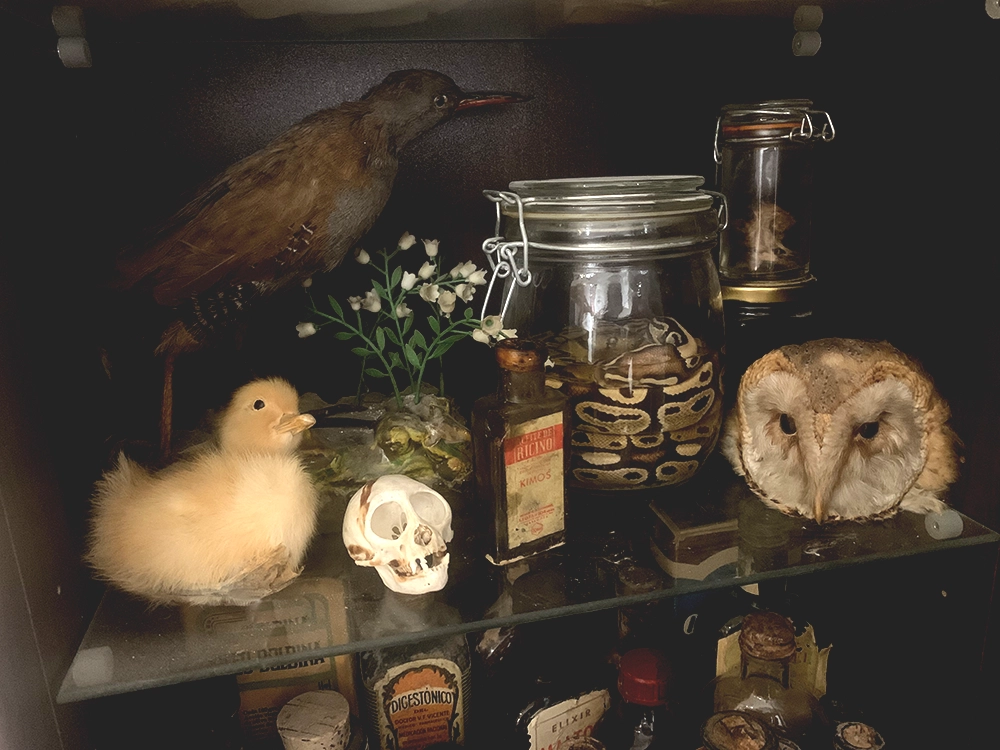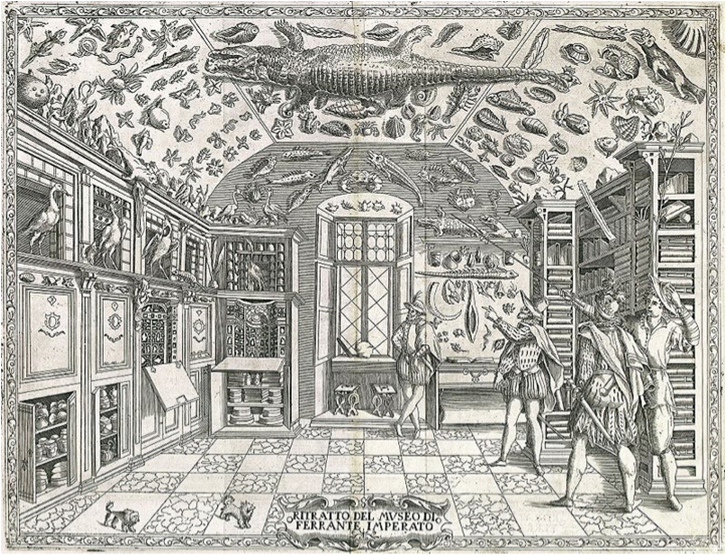Product Categories
Important links
- Blog
- About Us
- Our Commitments
- FAQs
- Privacy Policy
- Cookie Policy
- Legal Notice
It is common knowledge that the European nobility (and some non-European nobility) liked to flaunt their wealth. This was shown through architecture, fashion, domestic goods, jewels, numerous artistic collections, and other luxurious details.
Throughout the 16th and 17th centuries, they sought another way to demonstrate it through what was called the Cabinets of Curiosities or Wunderkammern. These were also common in Germany and Austria, known as the Wunderkammern, the Wonder Chamber in England, or the Kunstkammer in Denmark. Much of this originated during the Renaissance, where there was an explosion and promotion of the arts and sciences. It was the perfect breeding ground for these collections to generate enormous interest.

At Les Morts, you will find numerous objects that strongly remind you of some of the objects displayed in the cabinets of curiosities.
In this sense, in the 18th century, these luxury displays linked with science evolved to become adornments for palaces and stately homes, becoming very popular due to the numerous scientific, natural history, and commercial expeditions, among many other reasons. In other words, the cabinets of curiosities were authentic collections of rare and fascinating objects that ranged from artistic and archaeological pieces to fossils, bones, weapons, seeds, stones, plants, and animals.
Initially, a cabinet of curiosities of this type was based on a piece of furniture where small and valuable objects were stored and displayed. From the 16th century onwards, these small pieces of furniture took on a much deeper meaning, becoming small rooms where valuable and rare pieces were placed.

Restored display case and some objects created by Les Morts (like Abel and Ana’s Cabinet of Curiosities in Madrid).
According to the meaning of the time, a cabinet was one or several chambers where collectors, who had money, would usually retire to analyse and contemplate those objects that were their property. Normally, they were considered a private sanctuary where the owner and certain close friends would retire, although it was a forbidden place for the women of the household who could only access it for maintenance and cleaning.
Part of the ideals of Renaissance men was to create a total theatre where objects from all corners of knowledge to date would be put in a single microcosm. That is, a space dedicated to study and observation for the understanding of the world.
This microcosm grew increasingly larger thanks to the exploration trips to new lands and conquests. Over time, the cabinets of curiosities accumulated a large number of objects and materials that, due to lack of space in a single piece of furniture, ended up being destined for a specific type of objects such as those dedicated to history, numismatics, weapons, natural history, and art galleries.
It should be noted that these pieces of furniture were the precursor of what would later become modern specialised museums, where they went from being private collections to an opening to the world of culture and nature.

Human Skull
Among the most famous cabinets of curiosities, we can find the one created by Francis I of France, followed by other very important ones such as the cabinet of wonders of the cleric Manfredo Settala in Milan, that of Ole Worm of natural history in Copenhagen (1655), of the professor Ulisse Aldrovandi of botany in Bologna (1568), of Basilius Besler in Nuremberg and the Museum of the Roman College directed by Athanasius Kircher.

Many of these cabinets of curiosities held, within their apparent disorder, a desire for classification. The Worm Museum had drawers labelled in rubles of wood, metal, shells, and other materials. Carved horn vases were next to deer antlers, as they were linked by the same material. It had a fairly ordered classification divided into 4 books:
But this classification only attended to the materials from which they are made, forgetting other classifications such as according to the place of origin.
The German Casper Neickel created a work where the correct instructions were given to understand and organise these “mini museums” or chambers of rarities, where the distribution was recommended starting from the natural to the artificial. Other types of classifications imitated the postulates created during the Greco-Roman era.
Although the distribution of these cabinets of wonders today are not a thing of the past. Current museums still maintain an air of cabinet as a reminder of the past, create retro exhibits, or subsequent exhibitions of curiosities that are currently produced.

In these cabinets of curiosities, “strange, new and singular things” were exhibited, where they mixed heterogeneously, although four large groups could be found following the Latin nomenclature. They were Naturalia (nature), Artificialia (artificial), Scientifica (scientific), and Exotica (exotic and strange).
In this group, objects from the three kingdoms within natural history were usually gathered:
Mineral. Precious or strange stones (heliotropes), fossils, lightning stones (discovered in the 17th century), Alpha 1 and other objects linked with alchemy over time.
Animal. Set of stuffed animals, shells, dry insects, shells, skeletons, antlers, tusks, etc.
Vegetable. Florilegia or herbals (also painted).


Les Morts‘ Pieces in Ana and Abel’s Cabinet
In this grouping, objects created or modified by man were added.
Objects created by man such as antiques, archaeological objects, works of art, medals, weapons, or display case objects (bottles, boxes, among others).
Objects modified by man such as paintings on stone, pieces of precious or finely carved stones (cameos, intaglios), ivory, amber, rock crystal, ostrich eggs, decoration on skulls, etc.
In this classification, some elements of the scientific evolution of the time, automatons, etc. were found.
In this last group, those plants and animals that were considered exotic for the time were placed and came from expeditions and conquests in the new world, as well as ethnographic objects from indigenous peoples such as Sugar skulls.
If you like curiosities and want to have something like a cabinet of curiosities, at Les Morts we have objects that will leave no one indifferent. We have what you are looking for, enter our online shop or contact us and start creating it now!
Copyright © 2024 Les Morts
Created with anger by Mery Von Funck aka Les Morts